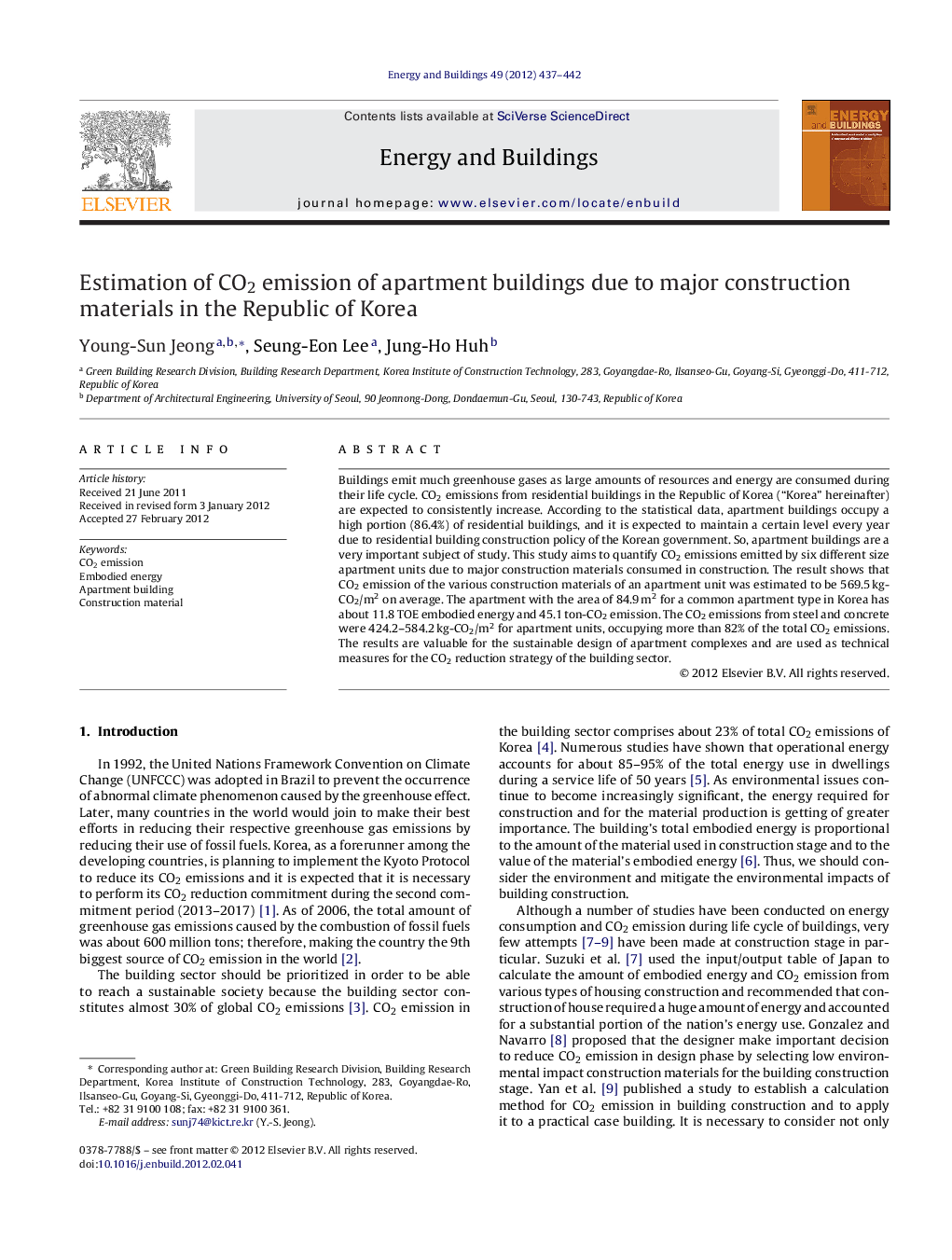| Article ID | Journal | Published Year | Pages | File Type |
|---|---|---|---|---|
| 263951 | Energy and Buildings | 2012 | 6 Pages |
Buildings emit much greenhouse gases as large amounts of resources and energy are consumed during their life cycle. CO2 emissions from residential buildings in the Republic of Korea (“Korea” hereinafter) are expected to consistently increase. According to the statistical data, apartment buildings occupy a high portion (86.4%) of residential buildings, and it is expected to maintain a certain level every year due to residential building construction policy of the Korean government. So, apartment buildings are a very important subject of study. This study aims to quantify CO2 emissions emitted by six different size apartment units due to major construction materials consumed in construction. The result shows that CO2 emission of the various construction materials of an apartment unit was estimated to be 569.5 kg-CO2/m2 on average. The apartment with the area of 84.9 m2 for a common apartment type in Korea has about 11.8 TOE embodied energy and 45.1 ton-CO2 emission. The CO2 emissions from steel and concrete were 424.2–584.2 kg-CO2/m2 for apartment units, occupying more than 82% of the total CO2 emissions. The results are valuable for the sustainable design of apartment complexes and are used as technical measures for the CO2 reduction strategy of the building sector.
► We estimate CO2 emissions of six apartment unit types in the Republic of Korea by major construction materials. ► Steel and cement have a lot of embodied energy and CO2 emission intensity. ► CO2 emission per unit floor area of apartment of Korea was about 569.5 kg-CO2/m2. ► Steel and concrete account for 82% of CO2 emissions from apartment construction.
